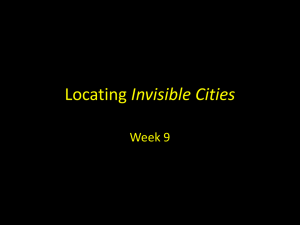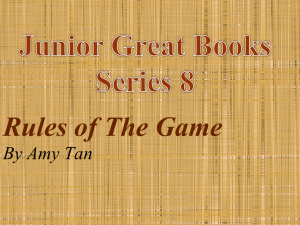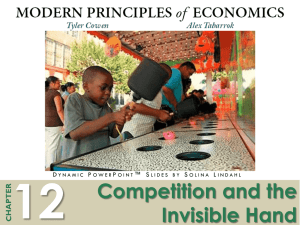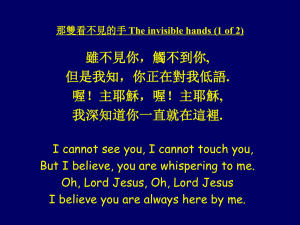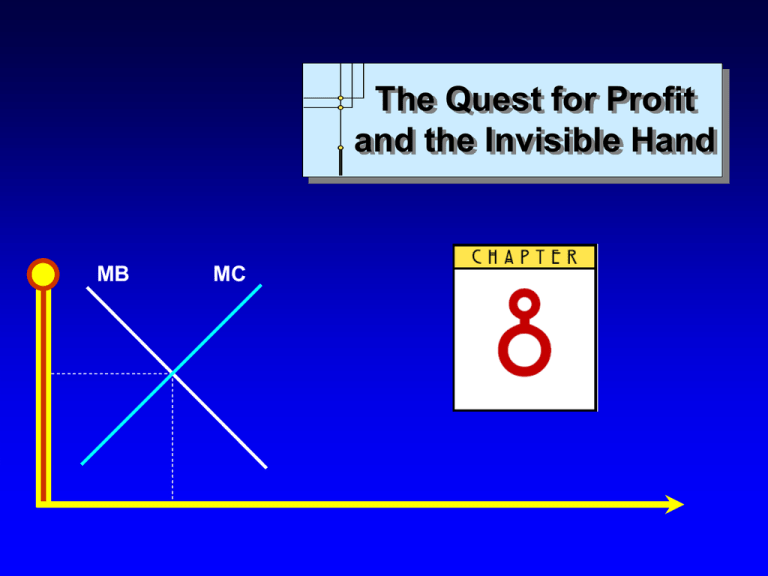
The Quest for Profit
and the Invisible Hand
MB
MC
MB MC
The Central Role
of Economic Profit
According to Adam Smith
People are motivated by self-interest.
The goal of profit maximization will serve
society’s collective interest.
Copyright c 2004 by The McGraw-Hill
Companies, Inc. All rights reserved.
Chapter 8: The Quest for Profit and the Invisible Hand
Slide 2
MB MC
The Central Role
of Economic Profit
Three Types of Profit
Accounting Profit = total revenue – explicit
costs (payments for factors of production)
Copyright c 2004 by The McGraw-Hill
Companies, Inc. All rights reserved.
Chapter 8: The Quest for Profit and the Invisible Hand
Slide 3
MB MC
The Central Role
of Economic Profit
Three Types of Profit
Economic Profit = total revenue – explicit
costs – implicit costs (opportunity cost of
the resources supplied by the firm’s
owners)
Copyright c 2004 by The McGraw-Hill
Companies, Inc. All rights reserved.
Chapter 8: The Quest for Profit and the Invisible Hand
Slide 4
MB MC
The Central Role
of Economic Profit
Three Types of Profit
Normal Profit = accounting profit –
economic profit
Copyright c 2004 by The McGraw-Hill
Companies, Inc. All rights reserved.
Chapter 8: The Quest for Profit and the Invisible Hand
Slide 5
MB MC
The Central Role
of Economic Profit
Calculating Profit
Suppose a firm has the following:
TR
[Total Revenue] = $400,000
Explicit costs (salaries) = $250,000/yr
Machinery and other equipment with a resale
value of $1 million
Copyright c 2004 by The McGraw-Hill
Companies, Inc. All rights reserved.
Chapter 8: The Quest for Profit and the Invisible Hand
Slide 6
MB MC
The Central Role
of Economic Profit
Calculating Profit
Accounting Profit
$400,000(TR)
- $250,000 (explicit costs) =
$150,000
Copyright c 2004 by The McGraw-Hill
Companies, Inc. All rights reserved.
Chapter 8: The Quest for Profit and the Invisible Hand
Slide 7
MB MC
The Central Role
of Economic Profit
Calculating Profit
To calculate economic profits, assume
Annual
interest on savings = 10%
[Then the $1 million spent on equipment could
have earned $100,000/yr had it been invested]
Economic Profit
$400,000
(TR) - $250,000 (explicit cost) $100,000 (implicit cost) = $50,000
Copyright c 2004 by The McGraw-Hill
Companies, Inc. All rights reserved.
Chapter 8: The Quest for Profit and the Invisible Hand
Slide 8
MB MC
The Central Role
of Economic Profit
Calculating Profit
Normal Profit
Profit ($150,000/yr) – Economic Profit
($50,000/yr) = $100,000/yr
Accounting
Copyright c 2004 by The McGraw-Hill
Companies, Inc. All rights reserved.
Chapter 8: The Quest for Profit and the Invisible Hand
Slide 9
MB MC
The Difference Between
Accounting Profit and Economic Profit
Total
revenue
Explicit
costs
Explicit
costs
Accounting
profit
Normal profit =
opportunity cost of
resources supplied
by owners of firm
Copyright c 2004 by The McGraw-Hill
Companies, Inc. All rights reserved.
Chapter 8: The Quest for Profit and the Invisible Hand
Economic
profit
Slide 10
MB MC
The Central Role
of Economic Profit
A Review
Accounting Profit = TR – explicit costs
Economic Profit = TR – explicit and
implicit costs
Economic Profit = 0 when accounting
profit = normal profit
To remain in business in the long run,
economic profits must be greater than or
equal to 0 (zero).
Copyright c 2004 by The McGraw-Hill
Companies, Inc. All rights reserved.
Chapter 8: The Quest for Profit and the Invisible Hand
Slide 17
MB MC
The Invisible Hand Theory
Two Functions of Price
The rationing function of price
To
distribute scarce goods to those consumers
who value them most highly
Copyright c 2004 by The McGraw-Hill
Companies, Inc. All rights reserved.
Chapter 8: The Quest for Profit and the Invisible Hand
Slide 18
MB MC
The Invisible Hand Theory
Two Functions of Price
The allocative function of price
To
direct resources away from overcrowded
markets and toward markets that are
underserved
Copyright c 2004 by The McGraw-Hill
Companies, Inc. All rights reserved.
Chapter 8: The Quest for Profit and the Invisible Hand
Slide 19
MB MC
The Invisible Hand Theory
Profits and Losses Would Ensure
That supplies within a market would be
distributed efficiently (rationing function)
Resources would be allocated across
markets to produce the most efficient
possible mix of goods and services
(allocative function)
Copyright c 2004 by The McGraw-Hill
Companies, Inc. All rights reserved.
Chapter 8: The Quest for Profit and the Invisible Hand
Slide 20
MB MC
The Invisible Hand Theory
Responses to Profits and Losses
Markets with firms earning economic
profits will attract resources.
Markets where firms are experiencing
economic losses tend to lose resources.
Copyright c 2004 by The McGraw-Hill
Companies, Inc. All rights reserved.
Chapter 8: The Quest for Profit and the Invisible Hand
Slide 21
MB MC
Economic Profit in the
Short Run in the Corn Market
MC
S
ATC
2.00
D
65
Quantity (millions of
bushels/year)
Price ($/bushel)
Price ($/bushel)
Economic profit
= $104,000/yr
Price
2.00
1.20
130
Quantity (1000s of
bushels/year)
Market price of $2/bushel produces economic profits
Copyright c 2004 by The McGraw-Hill
Companies, Inc. All rights reserved.
Chapter 8: The Quest for Profit and the Invisible Hand
Slide 22
MB MC
The Effect of Entry on
Price and Economic Profit
S
S’
MC
ATC
2.00
1.50
D
65 95
Quantity (millions of
bushels/year)
Price ($/bushel)
Price ($/bushel)
Economic profit
= $50,400/yr
2.00
1.50
Price
120 130
Quantity (1000s of
bushels/year)
Economic profits attract firms, reducing prices and profits
Copyright c 2004 by The McGraw-Hill
Companies, Inc. All rights reserved.
Chapter 8: The Quest for Profit and the Invisible Hand
Slide 23
MB MC
Equilibrium when Entry Ceases
MC
S
1.00
Price ($/bushel)
Price ($/bushel)
ATC
Price
1.00
D
115
Quantity (millions of
bushels/year)
90
Quantity (1000s of
bushels/year)
Entry of firms continues until all firms earn a normal profit
Copyright c 2004 by The McGraw-Hill
Companies, Inc. All rights reserved.
Chapter 8: The Quest for Profit and the Invisible Hand
Slide 24
MB MC
A Short-Run Economic
Loss in the Corn Market
MC
S
0.75
D
60
Quantity (millions of
bushels/year)
Price ($/bushel)
Price ($/bushel)
Economic loss
= $21,000/year
1.05
0.75
Price
70 90
Quantity (1000s of
bushels/year)
Prices below minimum ATC results in economic losses.
Copyright c 2004 by The McGraw-Hill
Companies, Inc. All rights reserved.
Chapter 8: The Quest for Profit and the Invisible Hand
Slide 25
ATC
MB MC
Equilibrium when Exit Ceases
S’
S
1.00
0.75
D
40 60
Quantity (millions of
bushels/year)
Price ($/bushel)
Price ($/bushel)
MC
1.00
0.75
ATC
Price
90
Quantity (1000s of
bushels/year)
The departure of firms from the industry increases the market price
Copyright c 2004 by The McGraw-Hill
Companies, Inc. All rights reserved.
Chapter 8: The Quest for Profit and the Invisible Hand
Slide 26
MB MC
The Invisible Hand Theory
Observations
In the long-run, in a competitive market, all
firms will tend to earn zero economic
profits.
Copyright c 2004 by The McGraw-Hill
Companies, Inc. All rights reserved.
Chapter 8: The Quest for Profit and the Invisible Hand
Slide 27
MB MC
The Invisible Hand Theory
Observations
Zero economic profits are the
consequence of price movements caused
by the entry and exit of firms trying to
maximize economic profits.
Copyright c 2004 by The McGraw-Hill
Companies, Inc. All rights reserved.
Chapter 8: The Quest for Profit and the Invisible Hand
Slide 28
MB MC
The Invisible Hand Theory
Two Attractive Features
The market outcome is efficient in the long
run.
P
= MC
If output is increased: MC > MB.
If output is reduced: MC < MB.
Copyright c 2004 by The McGraw-Hill
Companies, Inc. All rights reserved.
Chapter 8: The Quest for Profit and the Invisible Hand
Slide 31
End of
Chapter
MB
MC


